- 0086-571-85302990
- sales@greenskybio.com
The Optimal Method for Extracting Natural Grape Seed Extract.
2024-11-27

1. Introduction
Grape Seed Extract has gained significant attention in recent years due to its numerous health - promoting properties. It is rich in antioxidants, such as proanthocyanidins, which have been associated with various health benefits including anti - inflammatory, cardiovascular protection, and anti - aging effects. The extraction method plays a crucial role in obtaining a high - quality Grape Seed Extract with maximum bioactive compounds. This article aims to explore the optimal method for extracting natural Grape Seed Extract by discussing different extraction techniques, factors influencing extraction efficiency, and quality assessment of the extract.
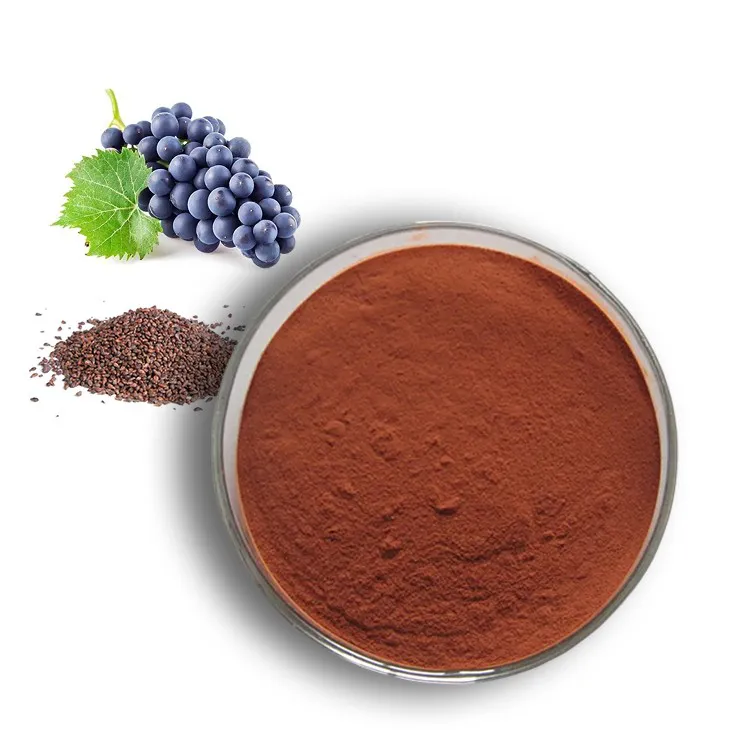
2. Different Extraction Techniques
2.1 Solvent Extraction
Solvent extraction is one of the most common methods for obtaining grape seed extract. It involves the use of a solvent to dissolve the bioactive compounds from the grape seeds.
- Organic Solvents: Ethanol and methanol are frequently used organic solvents. Ethanol - based extraction is popular as it is relatively safe, and ethanol is a generally recognized as safe (GRAS) solvent. It can effectively extract proanthocyanidins from grape seeds. Methanol, on the other hand, is also effective but is more toxic and requires more careful handling.
- Aqueous Extraction: Water can be used as a solvent. However, aqueous extraction may have lower extraction efficiency compared to organic solvents for some bioactive compounds. But it has the advantage of being a non - toxic and environmentally friendly option.
- Mixed Solvents: A combination of water and organic solvents, such as ethanol - water mixtures, can be used. This can often improve the extraction efficiency by combining the advantages of both water and organic solvents. For example, a certain ratio of ethanol - water may be able to extract a wider range of bioactive compounds more effectively.
2.2 Supercritical Fluid Extraction (SFE)
Supercritical fluid extraction is a relatively advanced technique. Supercritical carbon dioxide (CO₂) is often used as the supercritical fluid.
- Advantages: It offers several advantages over traditional solvent extraction methods. Firstly, supercritical CO₂ is non - toxic, non - flammable, and environmentally friendly. Secondly, it has a relatively low critical temperature and pressure, which means it can be used at relatively mild conditions. Thirdly, it can selectively extract certain compounds based on their solubility in the supercritical fluid, resulting in a more purified extract.
- Disadvantages: The main disadvantage is the high cost associated with the equipment required for supercritical fluid extraction. Also, the extraction process may be more complex to optimize compared to solvent extraction.
2.3 Microwave - Assisted Extraction (MAE)
Microwave - assisted extraction utilizes microwave energy to enhance the extraction process.
- Mechanism: Microwaves can cause rapid heating of the sample and solvent mixture. This rapid heating creates internal pressure and temperature gradients within the sample, which can disrupt cell walls more effectively, allowing for better release of bioactive compounds.
- Benefits: MAE can significantly reduce the extraction time compared to traditional extraction methods. For example, in some cases, it can reduce the extraction time from hours to minutes. It also has the potential to improve extraction efficiency.
- Limitations: However, the microwave - assisted extraction process needs to be carefully controlled. Over - exposure to microwaves can lead to degradation of some bioactive compounds. Also, the uniformity of the microwave field within the extraction vessel can be a challenge to ensure.
2.4 Ultrasonic - Assisted Extraction (UAE)
Ultrasonic - assisted extraction employs ultrasonic waves to aid in the extraction.
- How it Works: Ultrasonic waves create cavitation bubbles in the solvent. When these bubbles collapse, they generate high - intensity shock waves and micro - jets that can break open the cells of the grape seeds, facilitating the release of bioactive compounds.
- Advantages: UAE is relatively simple and cost - effective compared to some other advanced extraction techniques. It can also improve extraction efficiency and reduce extraction time. Additionally, it can be easily combined with other extraction methods, such as solvent extraction.
- Drawbacks: One of the drawbacks is that the ultrasonic energy may not be evenly distributed in a large - scale extraction process, which can lead to inconsistent extraction results. Also, excessive ultrasonic energy may cause some damage to the bioactive compounds.
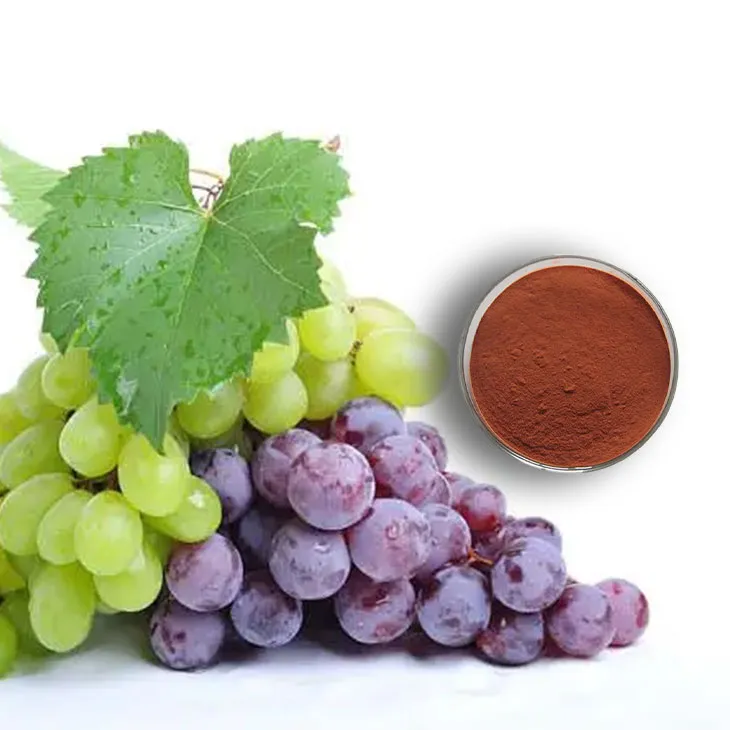
3. Factors Influencing Extraction Efficiency
3.1 Particle Size of Grape Seeds
The particle size of grape seeds has a significant impact on extraction efficiency.
- Smaller Particle Size: Smaller particles have a larger surface area to volume ratio. This means that there is more surface area available for the solvent or extraction agent to interact with the bioactive compounds within the grape seeds. For example, if the grape seeds are ground into a fine powder, the extraction agent can more easily penetrate the particles and dissolve the desired compounds.
- Limitations of Excessive Grinding: However, excessive grinding can also lead to some problems. It may cause the formation of fine particles that can clog the extraction equipment or filter. Also, it may lead to the degradation of some bioactive compounds due to increased exposure to air and mechanical stress.
3.2 Solvent to Sample Ratio
The ratio of solvent to sample is an important factor to consider.
- Higher Solvent to Sample Ratio: A higher ratio generally means that there is more solvent available to dissolve the bioactive compounds. This can lead to higher extraction efficiency. For example, if there is a large amount of solvent relative to the amount of grape seeds, more of the target compounds can be extracted.
- Economic and Practical Considerations: However, a very high solvent to sample ratio may not be practical or economical. It may increase the cost of the extraction process, especially when using expensive solvents. Also, it may require larger extraction equipment and more time for solvent removal during the post - extraction process.
3.3 Extraction Time
The extraction time affects the amount of bioactive compounds that can be extracted.
- Optimal Extraction Time: Each extraction technique has an optimal extraction time. For example, in solvent extraction, if the extraction time is too short, not all of the bioactive compounds may be extracted. However, if the extraction time is too long, it may lead to the degradation of some compounds or the extraction of unwanted impurities.
- Determining the Optimal Time: The optimal extraction time can be determined through experimental studies. It may vary depending on the extraction method, the type of grape seeds, and the target bioactive compounds.
3.4 Extraction Temperature
Temperature plays a crucial role in the extraction process.
- Increasing Temperature: In general, increasing the extraction temperature can increase the solubility of bioactive compounds in the solvent, which can improve extraction efficiency. For example, in solvent extraction, a higher temperature can make the solvent more effective in dissolving proanthocyanidins from grape seeds.
- Limitations of High Temperature: However, high temperature can also have negative effects. It may cause the degradation of some heat - sensitive bioactive compounds. For supercritical fluid extraction, the temperature needs to be carefully controlled within the supercritical range to ensure the effectiveness of the process.
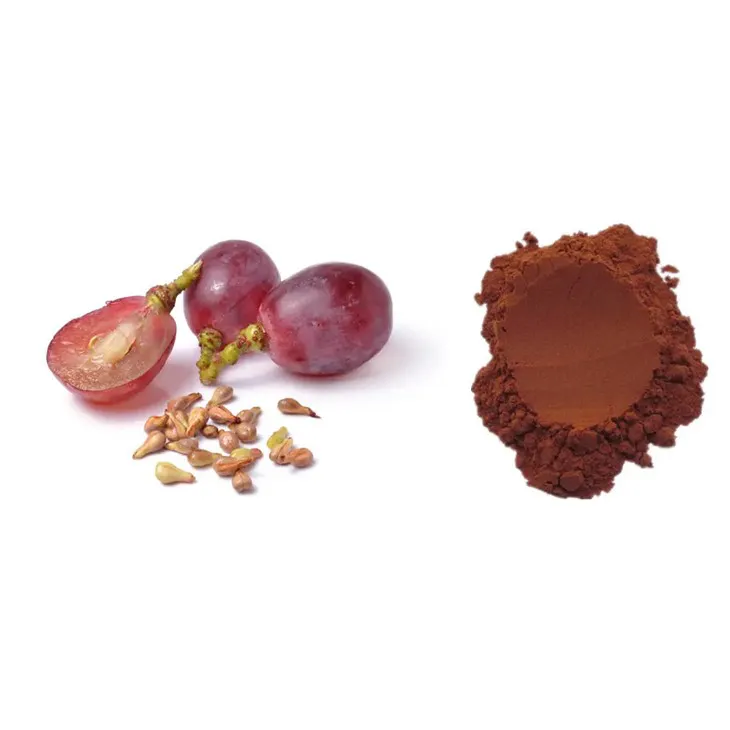
4. Quality Assessment of Grape Seed Extract
4.1 Chemical Composition Analysis
Chemical composition analysis is essential for assessing the quality of grape seed extract.
- Proanthocyanidin Content: Proanthocyanidins are one of the key bioactive compounds in grape seed extract. High - performance liquid chromatography (HPLC) can be used to accurately measure the proanthocyanidin content. A high - quality extract should have a significant amount of proanthocyanidins.
- Other Compounds: Besides proanthocyanidins, other compounds such as phenolic acids and flavonoids may also be present in grape seed extract. Analyzing the content of these compounds can provide a more comprehensive understanding of the extract's composition.
4.2 Antioxidant Activity Assay
The antioxidant activity of grape seed extract is an important quality indicator.
- DPPH Assay: The 2,2 - diphenyl - 1 - picrylhydrazyl (DPPH) assay is a commonly used method to measure antioxidant activity. Grape seed extract with high antioxidant activity will be able to scavenge DPPH radicals more effectively. A high - quality extract should show a high percentage of DPPH radical scavenging activity.
- ABTS Assay: Another method is the ABTS [2,2' - azinobis - (3 - ethylbenzothiazoline - 6 - sulfonic acid)] assay. This assay also measures the ability of the extract to scavenge free radicals and can be used to compare the antioxidant activity of different grape seed extracts.
4.3 Purity and Contaminant Analysis
Ensuring the purity of grape seed extract and analyzing for contaminants is crucial.
- Heavy Metal Analysis: Grape seed extract should be analyzed for heavy metals such as lead, cadmium, and mercury. High levels of these heavy metals can be harmful to human health. Inductively coupled plasma - mass spectrometry (ICP - MS) can be used for accurate heavy metal analysis.
- Pesticide Residue Analysis: Since grapes may be treated with pesticides during cultivation, it is necessary to analyze for pesticide residues in grape seed extract. Gas chromatography - mass spectrometry (GC - MS) or liquid chromatography - mass spectrometry (LC - MS) can be used for pesticide residue analysis.
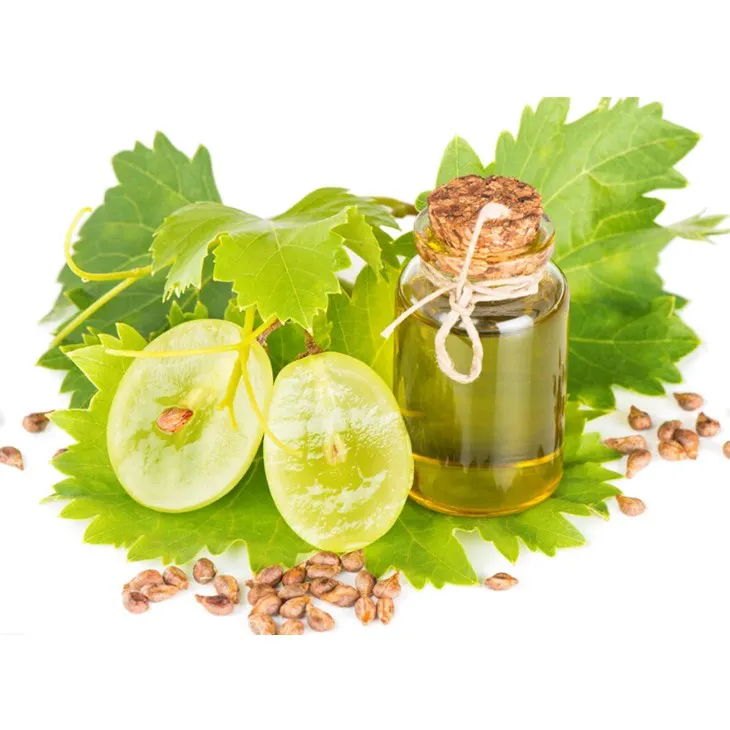
5. Conclusion
In conclusion, the optimal method for extracting Natural grape seed extract involves a combination of factors. Different extraction techniques, such as solvent extraction, supercritical fluid extraction, microwave - assisted extraction, and ultrasonic - assisted extraction, each have their own advantages and disadvantages. Factors such as particle size of grape seeds, solvent to sample ratio, extraction time, and extraction temperature significantly influence extraction efficiency. Quality assessment of the extract through chemical composition analysis, antioxidant activity assay, and purity and contaminant analysis is essential to ensure a high - quality grape seed extract. By carefully considering all of these aspects, it is possible to obtain the purest and most effective grape seed extract for various applications in the fields of food, pharmaceuticals, and cosmetics.
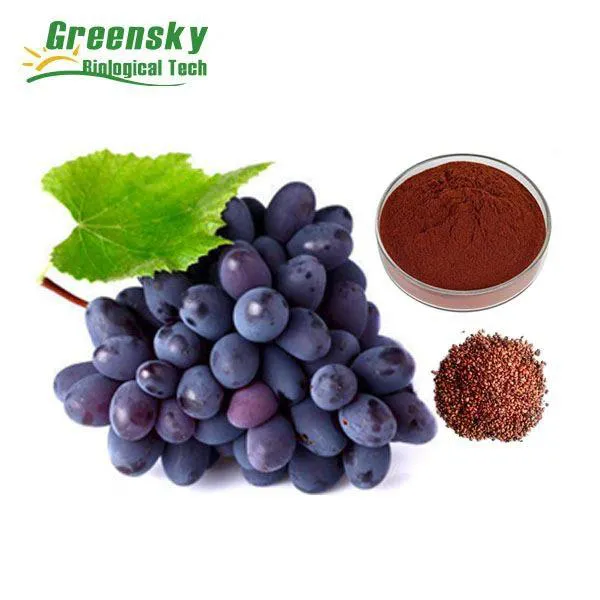
FAQ:
What are the common extraction techniques for Natural grape seed extract?
There are several common extraction techniques for Natural grape seed extract. One is solvent extraction, which often uses organic solvents like ethanol or methanol to dissolve the active components from grape seeds. Another method is supercritical fluid extraction, typically using supercritical carbon dioxide. This method has the advantage of being more environmentally friendly as it doesn't leave solvent residues. Maceration is also a traditional technique where grape seeds are soaked in a solvent for a certain period to extract the desired substances.
What factors can influence the extraction efficiency of grape seed extract?
The extraction efficiency of grape seed extract can be influenced by multiple factors. Firstly, the type of solvent used plays a crucial role. Different solvents have different solubility for the active compounds in grape seeds. Secondly, the extraction time and temperature are important. Longer extraction times and appropriate temperatures can generally increase the extraction yield, but excessive values may also cause degradation of some active components. Particle size of the grape seeds also matters. Smaller particle sizes usually provide a larger surface area for solvent interaction, which can enhance extraction efficiency.
How can we assess the quality of grape seed extract?
The quality assessment of grape seed extract can be carried out through several methods. One way is to analyze the content of active components such as proanthocyanidins. High - quality grape seed extract should have a relatively high content of these beneficial compounds. Purity is another aspect to consider. It can be determined by detecting the presence of impurities, for example, residual solvents or other contaminants. Physical and chemical properties like color, solubility, and stability can also reflect the quality. A good - quality extract should have a consistent color, good solubility, and long - term stability.
Are there any differences between different extraction methods in terms of the quality of the final extract?
Yes, there are differences. For example, solvent extraction may leave some solvent residues if the purification process is not thorough enough, which can affect the quality and safety of the final extract. Supercritical fluid extraction, on the other hand, can produce a cleaner extract with fewer impurities as it doesn't rely on traditional organic solvents. Maceration may result in a relatively lower yield and the quality may be affected by factors such as the soaking time and temperature control during the process.
What are the potential applications of high - quality grape seed extract?
High - quality grape seed extract has a wide range of potential applications. In the field of health and wellness, it is often used as a dietary supplement due to its antioxidant properties, which can help combat oxidative stress in the body. It may also have anti - inflammatory effects and can potentially be used in the prevention and treatment of certain chronic diseases. In the cosmetics industry, grape seed extract is used in various skincare products for its ability to protect the skin from free - radical damage, improve skin elasticity, and delay the aging process.
Related literature
- Optimization of Grape Seed Extract Production: A Review"
- "Extraction and Characterization of Bioactive Compounds from Grape Seeds"
- "Comparative Study of Different Extraction Methods for Grape Seed Proanthocyanidins"
- ▶ Hesperidin
- ▶ Citrus Bioflavonoids
- ▶ Plant Extract
- ▶ lycopene
- ▶ Diosmin
- ▶ Grape seed extract
- ▶ Sea buckthorn Juice Powder
- ▶ Fruit Juice Powder
- ▶ Hops Extract
- ▶ Artichoke Extract
- ▶ Mushroom extract
- ▶ Astaxanthin
- ▶ Green Tea Extract
- ▶ Curcumin
- ▶ Horse Chestnut Extract
- ▶ Other Product
- ▶ Boswellia Serrata Extract
- ▶ Resveratrol
- ▶ Marigold Extract
- ▶ Grape Leaf Extract
- ▶ New Product
- ▶ Aminolevulinic acid
- ▶ Cranberry Extract
- ▶ Red Yeast Rice
- ▶ Red Wine Extract
-
Thunder God Vine Extract
2024-11-27
-
Echinacea Extract
2024-11-27
-
Golden Seal Extract
2024-11-27
-
Carrageenan Extract Powder
2024-11-27
-
Uridine-5'-monophosphate Disodium salt
2024-11-27
-
Mango flavored powder
2024-11-27
-
Pomegranate Extract
2024-11-27
-
Shikonin
2024-11-27
-
Cactus Extract
2024-11-27
-
Beetroot Powder
2024-11-27





















